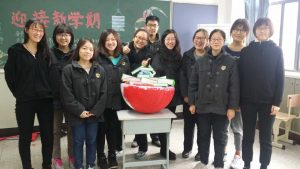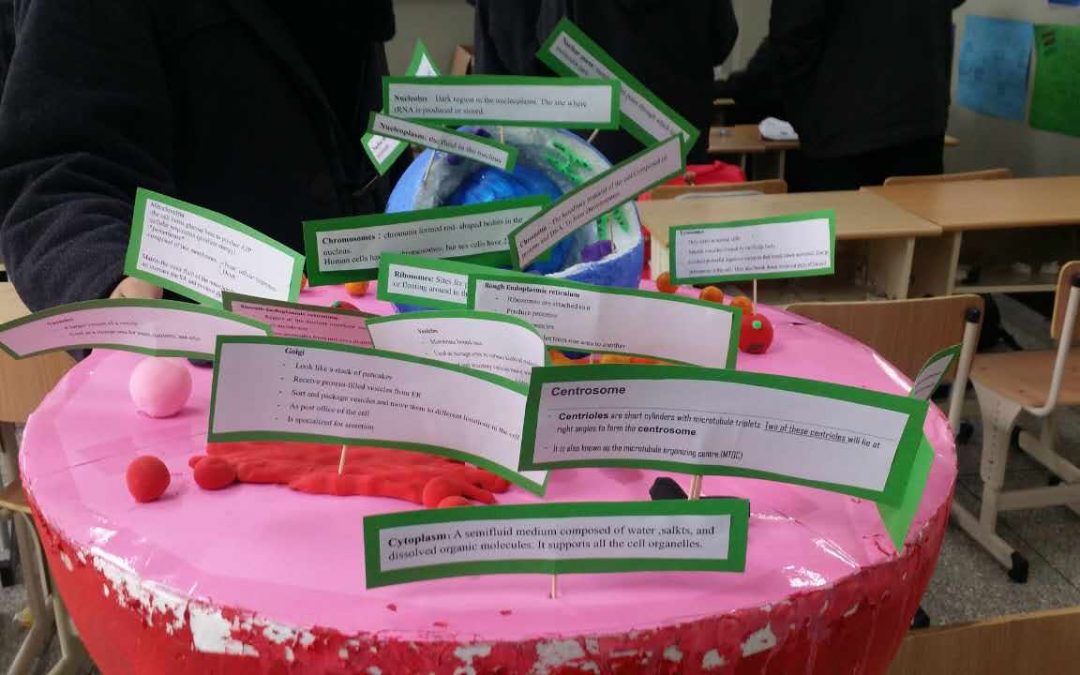Jeff Chan
Everything is new for the students who take biology class. A new subject, new teacher and a new way of learning.
As a big project for the cell unit of Biology 12, Mr. Chang gave the whole class a chance to make a big model cell. This was a brand new activity for the grade 12 students, so they were all excited about this. From interviewing for Mr. Chang, I know that the purpose of this activity is to make the students understand the biological change and functions of the cells by making a model of the microcosmic transformations. “Biology is a subject which contains lots of microcosmic elements, so it is important to show the little things in clear visual ways such as building the model,” Mr. Chang said.
The process of making the cell ball was both fun and challenging. First, students bought two Polyurethane balls as the major part of the cell ball model. Second, students need to cut the bigger polyurethane ball into two pieces. Third, one group of students painted the small ball as the “Nucleolus.” Meanwhile, the other students used clay to make the major organelles of the cell such as vesicles and chromatin. In the last step, students stuck all the clay organelles onto the polyurethane balls.

This process was not always smooth. “I think the biggest difficulty of the activity was cutting the ball,” Penny Zhan (one of the students) said. How to cut the polyurethane ball is the very first problem these students need to face at. Since the students cannot bring dangerous cutting tools to school, they need to find another way to separate the ball into two pieces. The students wanted to use a paper knife to do it at first, but they found that it is too hard to use a paper knife to cut the big ball without breaking the knife. After lots of trying, the students found out the best way to solve the problems. They chose to use a long ruler to cut the ball. Two students stood on the opposite sides of the ball and used the ruler cut the ball back and forth. Through this method, the students opened the ball.
“The funniest thing was inside the cell ball,” Mr. Chang said. After breaking the ball in half, the students found that the “solid” ball was not really solid. Mr. Chang and the students found a lot of plastic waste inside the ball. Obviously, the seller of the ball put waste things inside the ball and did not suppose we would open it. We found lots of small plastic balls, some wired plastic shaped like a tire, even a pair of plastic toy bears. Now the bears have been added to Mr. Chang’s collection.
“This kind of activity is both interesting and instructive. I think I will let my students do it again sometime,” Mr. Chang said.

